#Jon S. Randal Peace Page
Text
A Memory Of Black History
Today’s memory of Black History comes courtesy of the Jon S. Randal Peace Page …
Michael couldn’t understand. From the age of 3, Little Michael had been best friends with another boy. Although Little Michael was Black, and his friend was white, it didn’t matter to either of them. They enjoyed each other’s company, and they loved playing together, that’s all that mattered. They were the best of…

View On WordPress
0 notes
Text
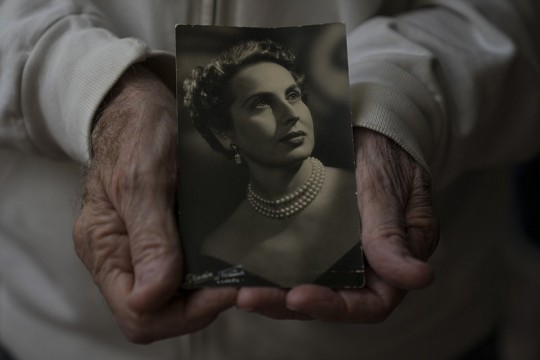
It was a "small" act.
But, at the time, she didn’t realize she was making a life-changing, and life-saving decision, not only for her but for hundreds of Polish Jews during the Second World War, helping save them from Nazi execution.
Only when she died last year, on April 8, 2022, at the age of 107 did the rest of the world learn of her courage.
She was born Carmen Koppel in Vienna, daughter of Frieda and Emil Koppel. Her father, an opera-loving grain merchant, chose her name after Bizet’s Carmen,” according to The Guardian, “She studied languages at the University of Vienna, taking shorthand to help with her note-taking.”
She said “My mother had insisted that I learn something useful, so I learnt to type.”
“In 1936 she married Josef Weitmann, who owned a curtain-making business in Kraków, and the couple settled there and had a son, Sascha.
“After the German occupation of Poland in 1939, the administration wanted to re-establish Kraków as Krakau, a German city. As Jews, [she] and her husband were forced to live in the Kraków ghetto, established by the Nazis in 1940. Its inhabitants were allowed to leave and return only with special permits. Josef was killed while trying to escape; Sascha was smuggled to relatives in Hungary.”
According to the New York Times, “in late 1944, as a slave laborer in the administrative offices of the Plaszow concentration camp in Poland, [she] typed an important version of the manifest of prisoners bound for [a] munitions factory in the area of the Czech Republic then known as the Sudetenland.”
“It was in those offices” that she also added her name and the names of two friends to the list, indicating her profession as “schreibkraft,” according to writer Alex Mindlin.
By typing that list, she almost certainly saved her own life, the lives of her friends, and many others, according to Mindlin.
That “list” “saved them from the gas chambers of Auschwitz, where most of the other Jews from Plaszow were deported,” according to The Teller Report.
Years later after the war, she would meet again the man who had made that list possible, the man who employed her.
She had a different last name by this time, but he still remembered her by her nickname. [She never liked the name “Carmen”, so close friends referred to her after a character in “La Bohème”.]
'It must have been around 1953,” she said. “I had gone to Vienna and I was walking along a street with an uncle. We were passing a coffee house where there was a group of people sitting. This large man ran across and hugged and started kissing me, saying: ‘Mimi, Mimi…’
“It was then that I realised that it was Schindler sitting with some of the Jews he had rescued.”
“The documents that [Mimi Reinhardt] worked on were made famous by Thomas Keneally’s 1982 novel . . . and by the 1993 Steven Spielberg movie ["Schindler's List"], both of which detailed the extraordinary lengths to which [Oskar] Schindler went to save the lives of some 1,200 of his Jewish workers,” according to the Times.
Other sources cite the number of lives saved even higher. According to AFP (Agence France-Presse) and The Times of Israel, “The lists which Reinhardt compiled for [Schindler] helped save the lives of some 1,300 Jews at considerable risk to his own life.”
“Austrian-born Reinhardt (sometimes spelled “Reinhard), herself a Jew, was recruited by Schindler himself and worked for him until 1945.”
This is a new story for the Jon S. Randal Peace Page. The Peace Page focuses on past and present stories seldom told of lives forgotten, ignored, or dismissed. The stories are gathered from writers, journalists, and historians to share awareness and foster understanding, to bring people together. And, as such, the stories are never relegated to one single month - they are available all year in the Peace Page archives and on this page each week throughout the year. We encourage you to learn more about the individuals and events mentioned here and to support the writers, educators, and historians whose words we present. Thank you for being here and helping us share awareness.
~~~~~
Reinhardt, then known as Carmen Koppel, “survived the final liquidation of the Kraków ghetto in March 1943, when 2,000 Jews were slaughtered, because the Nazis deemed her language and secretarial skills useful,” according to The Guardian.
At the time, the Red Army was approaching Poland and workers in Plaszow were being sent west to death camps,” according to The New York Times.
Reinhardt was a “prisoner at a concentration camp near Krakow, Poland during WWII in 1944,” according to the World Jewish Congress, when Schindler recruited her for a job in the camp's administrative office.
“Schindler and his Jewish accountant Itzhak Stern, who had helped to motivate Schindler, prepared the 'list' of essential workers - all of them Jews - for relocation to his new factory,' according to writer Peter Beaumont.
As Schindler’s secretary, Reinhardt “drew up the lists of Jewish workers in the Polish city of Krakow to work in the factory of her German industrialist boss”, according to writer Caroline Frost.
“This was a highly risky enterprise but is estimated to have saved . . . [the] workers from deportation and almost certain death in Nazi concentration camps.”
Reinhardt also “added the names of friends and her own married names until Schindler's quota negotiated with the SS was fulfilled: "Weitmann, Carmen, January 15, 1915, typist" is number 279 on the list.
“The rescue almost went awry” according to The Teller Report.
“On the way to Brünnlitz in 1944, the train carrying Schindler’s workers was diverted to Auschwitz,” according to The Guardian. “Death seemed inevitable. But Schindler used his military intelligence contacts to stop the diversion, claiming that these workers were vital for his armaments factory.”
“They had to stay in Auschwitz for two weeks,” according to The Teller Report.
“Mimi Reinhardt later compared the time to Dante's ‘Inferno’.”
“At the war’s end, [Schindler’s] workers were liberated, and Mimi was reunited with Sascha.”
Reinhardt “settled for a time in Morocco and then New York, where she lived for 50 years,” according to The Guardian. “She kept in touch with other ‘Schindler Jews’ whose lives had been saved by escaping the Plaszów camp under Schindler’s protection, but did not speak publicly about her earlier life until she moved to Israel in 2007.”
In Israel, she joined “her only son, Sacha Weitman, who was then a professor of sociology at Tel Aviv University,” according to The Times of Israel.
Schindler died in 1974, when he “was named by Israel’s Yad Vashem Holocaust museum as a member of the ‘Righteous Among the Nations’, an honour for non-Jews who tried to save Jews from Nazi extermination,’ according to Frost. “He is buried on the Mount of Olives just outside Jerusalem.”
The story of Reinhardt’s “small act” came to light when she was being interviewed by the Jewish Agency for Israel. (Note, “Reinhardt wasn’t directly portrayed in the Schindler’s List film,” according to News18.)
Reinhardt “expressed regret that Mr. Schindler, whom she adored, did not become a household name until after his death in 1974,” wrote Mindlin.
“He would have loved it, the attention,” she said.
She added in another interview, "I saw a man who was constantly risking his life for what he was doing. He was human. He must have had a heart of gold."
Reinhardt spent her last years at a nursing home north of Tel Aviv.
She is “mourned by her son and his family, as well as the thousands of people whose parents and grandparents she helped escape certain death,” according to the Jerusalem Post.
She has three granddaughters, nine great-grandchildren and two great-great-grandchildren.
In the image attached, Sasha Weitman, son of Mimi Reinhardt, holds an old photograph of his mother in Herzliya, Israel, (AP Photo/Ariel Schalit).
Of her contribution to history and assisting Schindler in saving hundreds of her fellow Jews, Reinhardt said, “I was just typing the list.”
~ jsr
The Jon S. Randal Peace Page
267 notes
·
View notes
Text
The Jon S. Randal Peace Page
His father, having seen the horrors of war and the rising tide of fascism, retreated to the countryside to start a family and find peace. He would have a son, who was born on August 21, 1920.
The father would write a series of books about a little boy who would peacefully play in the forest with creatures of all different shapes, colors, and sizes, supporting each other as true friends and preaching calm, peaceful love.
One of the toys the little boy loved was an Alpha Farnell teddy bear, which he named "Edward." The young boy eventually accumulated a collection of similar stuffed animals, which became his "friends." The young boy also enjoyed visiting a real Canadian bear at the London Zoo. The bear's name was "Winnipeg."
The young boy's name was Christopher Robin Milne, and his father was A.A. Milne, who would write a series of books based on the adventures of Christopher Robin and "Winnie-the-Pooh."
~ jsr
This was one of the earliest stories on The Peace Page, originally published in 2017. Thank you for being here.
~~~~~
Piglet sidled up to Pooh from behind.
“Pooh?” he whispered.
“Yes, Piglet?”
“Nothing,” said Piglet, taking Pooh’s hand.
“I just wanted to be sure of you.”
A.A. Milne
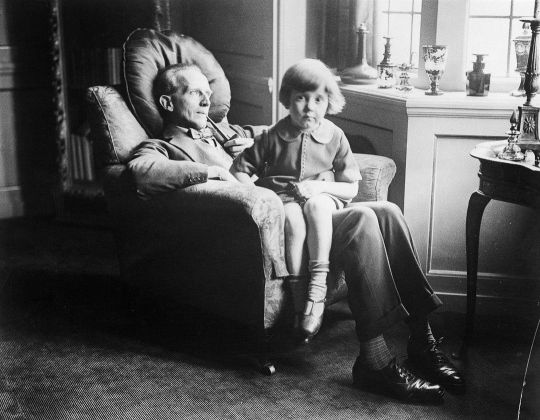
3 notes
·
View notes
Text
A Short, Important Story — Filosofa's Word
I found this very short true story on the Jon S. Randal Peace Page. It is a story that is well worth the retelling, for it is a story of immense importance and wisdom, one that should be remembered for all time, for in many ways, no matter how the world changes, some things never […]
A Short, Important Story — Filosofa’s Word

View On WordPress
0 notes
Photo
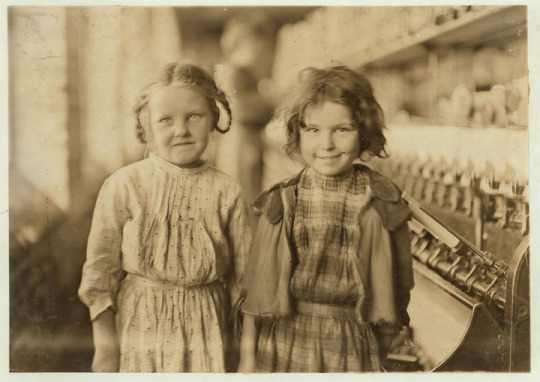
The Jon S. Randal Peace Page
·
Jon has offered this story three times since the Jon S. Randal Peace Page was born. The last time was three years ago yesterday. The tale it tell is important, and in recognition of Labor Day.
~~~
The dark-haired girl on the right with the impish smile, her name was Eddie Lou, she was about 8 years old when this photo was taken in 1909. The picture was taken at the Tifton Cotton Mill, Tifton, Georgia. The girls worked there.
The photograph was taken by Lewis Hine, who visited factories such as this mill and took photographs of the children who worked there as evidence for the National Child Labor Committee (NCLC). At times, Hines had to disguise himself, even posing as a bible salesman in order to get on company grounds because as a photographer he was prohibited.
"In the early 1900s, Hine traveled across the United States to photograph preteen boys descending into dangerous mines, shoeless 7-year-olds selling newspapers on the street and 4-year-olds toiling on tobacco farms. Though the country had unions to protect laborers at that time — and Labor Day, a federal holiday to honor them — child labor was widespread and widely accepted. The Bureau of Labor Statistics estimates that around the turn of the century, at least 18 percent of children between the ages of 10 and 15 were employed," according to the Washington Post.
Many industries hid the fact that they employed children. They took advantage of poor families, such as Eddie Lou's family. Eddie Lou's father had died and left her mother with 11 children and no income. Her mother was forced to work at the cotton mill for $4.50 a week. Eddie Lou and four siblings also worked there and they were all together paid $4.50 as well. Eddie Lou and her youngest siblings would eventually be sent to an orphanage because her mother wasn't able to provide for them.
Hine had been a teacher, but he left the teaching profession when he realized a camera could be used as an educational tool for social reform. He became a photographer for the NCLC to help change the laws and end child labor.
It was sometimes a dangerous job, and Hine was frequently threatened by factory police and foremen. He visited factories, sweatshops, and other businesses touted as the pillars of the community. He would find the young children, like Eddie Lou, working at these places, toiling their childhood away.
Hine also photographed immigrants at Ellis Island at a time when popular opinion of immigrants wasn't good. According to The Tenement Museum, which preserves and interprets the history of immigration, Hine "sought to humanize immigrants, to make their journeys, their wants, their struggles indistinguishable from any American".
Hines' photographs would be instrumental in changing the child labor laws in the United States. If it were not for him and his photographs, industries would have been able to hide the immorality of child labor and would have been able to continue exploiting children. If it were not for him, children today, instead of enjoying a three day weekend, would probably be working.
“It was Lewis Hine who made sure that millions of children are not working today,” said Jeffrey Newman, a former president of the New York-based committee."
According to the Washington Post, "though there had been investigations that attempted to expose these circumstances in the past, the industry simply dismissed those reports as — the term they would use today is — ‘fake news,’ ” said Hugh Hindman, a historian of child labor. “When Hine comes along and supplements the investigations with pictures, it creates a set of facts that can’t be denied anymore.”
Hine didn't have to do what he did, yet he did. At the time, he was one of the most hated men in America because of his photographs. He would be threatened with violence and even death. But, he felt it was his moral obligation to do what needed to be done, what some refused to do, what others were not capable of doing. Some inferred that it was unpatriotic to do what he did. Others, however, would realize later that what he did was one of the most patriotic things you can do.
According to the Washington Post, back then "there was no such thing as going viral in the early 1900s. The spread of Hine’s photos and the reform that they inspired was extremely slow. The Fair Labor Standards Act, the federal law that would prohibit most employment of minors, wasn’t passed until 1938. Hine died two years later — long before his work would be recognized for the impact it had."
People would forget about Lewis Hine and the work he did. He died at the age of 66.
But his photographs remain a reminder and a testament to his work, to his dedication to do what was right.
0 notes
Text
Life & Style, November 18
Cover: Keanu Reeves falling in love

Page 1: Photo Flash -- pictures from the 90s in Randall Slavin’s book We All Want Something Beautiful like Jennifer Aniston and Adam Duritz, and Charlize Theron and Leonardo DiCaprio
Page 2: Contents

Page 4: The Top 10 Black and White Looks -- Lili Reinhart, Laura Harrier, Alexa Chung, Charlize Theron, Naomie Harris
Page 5: Cara Delevingne, Gwyneth Paltrow, Kerry Washington, Rosamund Pike
Page 6: Twinning! Jennifer Connelly vs. Charlize Theron, Cardi B vs. Cara Delevingne, Suki Waterhouse vs. Rainey Qualley
Page 8: Ben Affleck’s relapse and new girlfriend Katie Cherry
Page 9: Tori Spelling and Dean McDermott’s reality check, Throwback -- Halle Berry, Biggest Spenders of the Week -- Fred Savage, John Cena, French Montana, Lindsay Lohan, Naomi Watts
Page 10: Teresa and Joe Giudice’s make-or-break vacation, Meghan King Edmonds and Jim Edmonds back from the brink, Quiz: Whose Abs Are They? Justin Theroux, Chris Hemsworth, Jason Momoa, Chris Pratt, Cody Simpson, David Beckham
Page 12: Khloe Kardashian jealous of sexy Sofia Richie, Adele wants to make the transition from music to movies with help from her Oscar-winning BFFs Emma Stone and Jennifer Lawrence, VIP Style -- Kristin Chenoweth, Kelly Ripa, Lupita Nyong’o, Hugh Jackman, Angela Kinsey, Paula Abdul, Dan Bilzerian, Doug E. Fresh
Page 14: The Week in Photos -- Jennifer Aniston and Ellen DeGeneres and Charlie Puth
Page 15: Gaten Matarazzo, Emilia Clarke and Emma Thompson and Michelle Yeoh at the premiere of Last Christmas
Page 16: Lance Bass and husband Michael Turchin, Angelina Jolie, Usain Bolt
Page 18: Mario Lopez and Lil Jon and Erika Christensen and Dania Ramirez and Natalie Martinez, Jennifer Lopez
Page 20: Drama Drama stars Carlye Tamaren and Zonta and Michelle DeFraites and Ana Golja, Lea Michele, Courtney Cox and David Beckham and Eric Stonestreet and Jesse Tyler Ferguson
Page 22: Paula Abdul in Las Vegas, Norman Reedus and daughter, Rihanna
Page 24: John Cena, Hilary Duff and daughter Banks, Tan France
Page 26: Stars Behaving Badly -- Jane Fonda, Kesha, Kanye West and Kim Kardashian and Rick Owens
Page 28: Say What?! Jonathan Van Ness, Michelle Pfeiffer to Zoe Kravitz, Paul Rudd, Keira Knightley, Nicole Kidman on Charlize Theron
Page 30: Ellen DeGeneres and Portia de Rossi’s fight to end all fights
Page 31: Gwen Stefani says Blake Shelton is a great dad to her kids, Jamie Foxx moves on with Dana Caprio
Page 32: Cover Story -- Keanu Reeves ready for love again with Alexandra Grant
Page 36: Lady Gaga -- the worst year of her life
Page 38: Meghan Markle and Kate Middleton secret peace talks
Page 40: Kim Kardashian trapped with control freak Kanye West
Page 42: Who Lives Here? RuPaul Charles
Page 44: Entertainment
Page 45: Star Review -- Jana Kramer, As Seen On-Screen -- Beth Behrs’ Free People’s Call On Me Embroidered Maxi Top in Ivory Combo on a recent episode of The Neighborhood
Page 46: Style -- fall into fitness -- Cara Santana and Olivia Culpo
Page 52: Diva or Down-to-Earth? Angelina Jolie, Hilaria Baldwin
Page 53: Wendy Williams
Page 54: Social Stars Post of the Week -- Kristin Cavallari and Jay Cutler, Kerry Washington and Reese Witherspoon, Jennifer Aniston, Blake Lively and Ryan Reynolds
Page 55: Liam Hemsworth, Tiffany Haddish and Snoop Dogg, Kate Hudson and daughter Rani, Gal Gadot
Page 56: Horoscope -- Scorpio Anne Hathaway, They’re Not Together But They Should Be -- Aquarius Kid Cudi and Taurus Adele
Page 58: Made Ya Look -- Jessica Biel and Justin Timberlake
Page 60: What I’m Into -- Laverne Cox
3 notes
·
View notes
Text
Franklin e Charlie Brown amici per la pelle

È il 31 luglio 1968. Un giovane nero sta leggendo un giornale, quando a un tratto il suo sguardo si posa su un dettaglio. Con le lacrime agli occhi, il giovane comincia a urlare e correre per tutta la casa, in cerca di sua madre. Anche lei rimane senza fiato di fronte a quella pagina: mai pensava di vivere così a lungo per vedere una cosa del genere.
E così in altre case del paese.
Cosa avevano visto madre e figlio?
La prima apparizione di Franklin Armstrong sull'iconico fumetto Peanuts.
Il personaggio di Franklin nasce grazie a una lettera che un'insegnante, Harriet Glickman, scrisse a Charles M. Schulz.
Martin Luther King, Jr. era stato appena ucciso con dei colpi di arma da fuoco fuori dalla sua stanza d'albergo di Memphis.
Glickman, lavorando coi bambini e avendone di suoi, era consapevole del potere del fumetto tra i giovani. "Mi resi conto che i bambini neri e i bambini bianchi non si vedevano mai raffigurati in classe insieme".
E ancora: "Dalla morte di Martin Luther King, mi sono chiesta continuamente cosa potessi fare io per cambiare quelle condizioni che hanno portato all'assassinio e che contribuiscono a questo clima di incomprensioni, odio, paura e violenza".
Glickman, nella sua lettera, chiese a Schulz di prendere in considerazione l'aggiunta di un personaggio nero nel popolare fumetto: un modo per riunire il paese e dimostrare ai neri che non erano esclusi dalla società americana.
L’insegnante aveva scritto anche ad altri autori: tutti però temevano che i tempi non fossero maturi, avevano paura per le loro carriere o di essere scaricati dal sindacato.
Charles Schulz avrebbe potuto ignorarla. E invece trovò il tempo di risponderle: era intrigato dall’idea, ma non era sicuro che lui fosse la persona adatta o che fosse la scelta giusta. Non voleva peggiorare le cose o sembrare condiscendente.
Glickman non si è arresa. Ha continuato a scrivergli, e sorprendentemente Schulz non ha mai smesso di risponderle. L’insegnante ha coinvolto altri amici neri, per spiegare i motivi delle loro battaglie e dare all’autore qualche suggerimento su come introdurre il personaggio senza offendere nessuno. La conversazione è andata avanti finché un giorno, Schulz, ha detto a Glickman di controllare il giornale. Era il 31 luglio 1968.
È in questa data che Charlie Brown incontra un nuovo personaggio di nome Franklin. Franklin è un ragazzino ordinario, che fa amicizia con Charlie e lo aiuta nelle sue avventure. Suo papà è a combattere in Vietnam. Alla fine delle tre strisce, Charlie invita Franklin a dormire da lui qualche volta.
Nessun annuncio in pompa magna, nessuna formalità per l'introduzione di questo nuovo personaggio: tutto inizia con una naturale conversazione tra due bambini, dove non contano le differenze di pelle. Ma Schulz non dimentica una dichiarazione importante: un bambino nero ha un papà in Vietnam, a combattere per l'America.
Per Schulz l’introduzione di Franklin era naturale e rilevante fino a un certo punto: non hanno pensato la stessa cosa alcuni fan, soprattutto negli stati del sud, che hanno protestato così tanto da far diventare la notizia un caso nazionale.
Un editore del sud ha dichiarato: “Non mi interessa se c’è un personaggio nero, ma non va mostrato a scuola insieme agli altri”.
Schulz finì a colloquio con il presidente della società di distribuzione del fumetto, che era preoccupato di questo nuovo personaggio che avrebbe potuto influenzare la popolarità dell’autore. Molti giornali in quei giorni minacciarono di tagliare le strisce di Schulz.
La risposta di Schulz: "Ricordo di aver raccontato di Franklin a Larry. Ne abbiamo parlato a lungo al telefono, voleva che lo cambiassi. Mi sono seduto e ho detto <Bene, Larry, mettiamola così: o si stampa come lo disegno io, o me ne vado. Che ne dici?>.”
Alla fine, Franklin divenne un personaggio dei Peanuts a tutti gli effetti e - nonostante le proteste – a scuola si sedette di fronte a Peppermint Patty, mentre giocava come centrale nella squadra di baseball.
Più di recente, Franklin è tornato sotto i riflettori nel 1973, dopo una serie di polemiche sulla serie"A Charlie Brown Thanksgiving" in cui il ragazzino appare seduto da solo su un lato del tavolo, mentre i suoi amici siedono insieme sull'altro lato, di fronte a lui. Schulz ha dichiarato di non avere controllo sulla serie animata.
Aveva invece il controllo sulle sue strisce di fumetti, e la sua presa di posizione, ancora oggi così importante, lo dimostra.
Glickman avrebbe raccontato più avanti di essere cresciuta con i valori dei suoi genitori, che hanno instillato in lei e i suoi fratelli valori di uguaglianza e rispetto. Valori che nel corso degli anni li hanno resi consapevoli su questioni di razzismo e diritti civili in America.
”Ogni giorno vedevo, o leggevo, di bambini neri che cercavano di andare a scuola e di folle di bianchi che gli urlavano e sputavano contro... e delle percosse… e dei cani… ma anche del coraggio di tante persone in quel tempo".
È grazie a Glickman e a Schulz se tutto il mondo oggi conosce e ama un ragazzino di nome Franklin.
(Fonte: The Jon S. Randal Peace Page)
1 note
·
View note
Text
Mé
The Jon S. Randal Peace Page
March 3 ·
"The school bell rings and I go out to play and this little white boy comes up to me and he says, you’re a Mexican, what are you doing here? Don’t you know Mexicans aren’t allowed to go to this white school? Why are you here? And I started crying," remembers Sylvia Méndez.
Méndez remembers that day clearly, and she remembers how her parents, especially her mother, fought for her.
For Women's History Month from the Peace Page, a story about a mother and daughter.
Seven years before Brown v. Board of Education, the historic case that ended legal school segregation in the US in 1954, a Puerto Rican mother would plant the seeds that started it all.
Felícitas Méndez became a civil rights pioneer in the early 1940s, according to Remezcla.
It started when Méndez and her husband, Gonzalo, tried to enroll their children in the local all-white Westminster Elementary School.
"Like any parent, Felicitas wanted her children to receive the best education possible. However, when a relative tried to enroll her 8-year-old daughter, Sylvia Méndez, in an all-white school, she was turned away," according to Remezcla.
At that time, "by law, school districts in California segregated American Indian and Asian children. They also commonly placed Latino and African American students in separate programs," according to the Smithsonian.
The school would discriminate against the children of Méndez because they had darker skin and had a Mexican-sounding name. Their cousins, however, were accepted because they had lighter skin color and had a French-sounding name, Vidaurri (their father was part French).
The school administrator told Felicitas’ sister-in-law that "you can leave your children here, but you’ll have to take your brother’s kids to a Mexican school."
Felicitas’ daughter, Sylvia Méndez, remembers, “My aunt took a Rosa Parks stand and said, ‘I’m not leaving my kids here if you don’t take my brother’s kids!’”
Although in many communities during that time, "Mexican-Americans were considered 'White' and typically unaffected by segregation laws . . . they still faced de facto segregation and anti-Mexican sentiment. In fact, the Mendez children had attended 'White schools' until they moved to Westminster. Also worth noting is that both Gonzalo and Felicitas were U.S. citizens. In fact, Felicitas was Puerto Rican, not Mexican. All of the Mendez children spoke fluent English," according to the Education Post.
Orange County was largely segregated, according to Gilbert Gonzalez, author of the book “Chicano Education in the Era of Segregation.” Public parks, swimming pools, restaurants and movie theaters were all segregated, and houses were often sold with racially restricted covenants, stipulating that the property could only be resold to whites.
School segregation first appeared in Orange County in 1919, and by the 1940s, more than 80% of students of Mexican heritage were attending separate schools from whites, said Gonzalez. The so-called Mexican schools were designed to Americanize the students — speaking Spanish was prohibited — and also to train boys for industrial work and agricultural labor and girls for housekeeping.
The "Mexican school" the school administer was referring to was further away from the family's home. It was "terrible" remembered Sylvia Méndez - "Besides the two wooden shacks, the books were 'hand-me-downs' and the desks were 'all falling apart.'" An electric fence — which she said shocked one of her classmates — separated the school from a neighboring cow pasture.
Felicitas and her husband "were appalled by this treatment of their kids. In response, they launched what turned out to be a groundbreaking civil rights case," according to writer Leticia Chavez-Garcia.
Méndez v . Westminster was filed in March of 1945 as a class-action lawsuit against four Orange County school districts.
"They argued that separate schools violated the Fourteenth Amendment," according to the Smithsonian.
The school district at first tried to compromise – if the parents dropped the suit, they’d allow the Méndez children to attend the white elementary school. Felicitas and her husband refused, "saying the the purpose of the lawsuit was to benefit the whole Mexican community, not just a handful of fortunate kids. Felicitas’s racialization informed her fight. In Arizona, people labeled her Black. While in California, they considered her Mexican," according to Fernández.
“We had to do it. Our children, all of our children, brown, Black, and white [“bronceados, negros y blancos”] must have the opportunity to be whatever they want to be, and education gives them that opportunity,” she said.
During the trial, the school also claimed that there was a "language issue", implying that the children could only speak Spanish. However, one of the children during the trial was asked to testify, proving that the children did speak English.
"In the final ruling in April 1946, the Ninth Federal Circuit Court of Appeals in San Francisco upheld that segregation practices were unconstitutional and violated the 14th Amendment," wrote Fernández.
"In 1947 California Governor Earl Warren pushed through legislation, [making California the first state in the country to end school segregation]," according to the Smithsonian.
The case "attracted attention outside Orange County. Thurgood Marshall, who at the time was chief counsel for the NAACP Legal Defense and Educational Fund, wrote an amicus brief in support of Méndez. The Japanese American Citizens League, the League of United Latin American Citizens, the American Jewish Congress and the American Civil Liberties Union also lent their support," according to the Los Angeles Times.
The Méndez story is an American story, but one that was forgotten or denied. It was the story of one brave woman who had experienced racism all her life and just wanted the best for her children. It was a story that brought together historic figures like Thurgood Marshall [featured in previous Peace Page stories] and Earl Warren who would be instrumental in ending segregation in Brown vs. Board of Education. It even had the side story of a Japanese-American family, who leased their farm to the Méndez when they were sent to internment camps.
"They ultimately helped outlaw almost 100 years of segregation in California and set legal precedent for the Brown v. Board of Education case, filed seven years later," according to the Education Post.
Years later, Sylvia Méndez still remembers after they had won the case and she was able to finally attend that white school, when that white boy bullied her and sent her home crying.
She told her mother, Felicitas:
"Mother I don’t want to go to that white school. They don’t want us in that white school."
Her mother looked at her daughter and said, "Sylvia, don’t you realize why you were in court every day? Don’t you know what we were fighting for while we were in court?”
Sylvia said, "Yes, to get into that white school with that beautiful playground."
Her mother replied, "No, Sylvia. We weren’t fighting so you could go to that beautiful white school. We were fighting because you’re equal to that white boy.’”
"Méndez said that was the first time she understood the full weight of what her parents had achieved," according to the Los Angeles Times.
And, Sylvia did return to the school.
Years later, just before her mother died, she reminded her daughter, “We didn’t just do it for you, Sylvia. We did it for all the children…I think this is history of the United States and everybody should know about it, Sylvia . . . Sylvia, you have to go out and talk about it!’ ”
While Méndez was initially reluctant to take up her mother’s request, she relented and started a nationwide effort to educate the public about her parents’ activism," according to writer Caitlin Yoshiko Kandil.
"Felicitas died in 1998, just as the case started gaining recognition. In 2000, a new high school in Santa Ana was named after the family — the Gonzalo and Felicitas Mendez Fundamental Intermediate School. Westminster native Sandra Robbie produced the Emmy Award-winning documentary 'Mendez v. Westminster: For All the Children' in 2002, and two years later, President George W. Bush invited the Mendez family to the White House for Hispanic Heritage Month. In 2007 the U.S. Postal Service issued a stamp commemorating the case," according to the Los Angeles Times.
Because of her instrumental role in the landmark case and her activism in telling her parents' story and educating others, Sylvia Méndez was awarded the Presidential Medal of Freedom in 2011 by President Obama.
Remembering what her mother and father fought for, Méndez, said, "This is the history of the United States, the history of California. Mendez isn’t just about Mexicans. It’s about everybody coming together. If you start fighting for justice, then people of all ethnicities will become involved.”

[Photo from Sylvia Méndez School]
0 notes
Text
Quarrel of the Colours
November is National Native American Heritage Month, as dedicated by President George H.W. Bush in 1990. I don’t know why, but a search through my archives shows that I have not posted about this very important month before. My best guess is that in November my focus is mainly on elections and the upcoming holidays, but as I need a break from talk of politics today and am seriously lacking in…
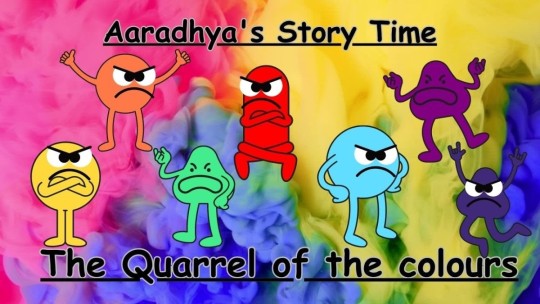
View On WordPress
#&039;Quarrel of the Colours&039;#Jon S. Randal Peace Page#National Native American Heritage Month#Native American folklore#origin of the rainbow#President George H.W. Bush
0 notes
Text

When she was a baby, she was given the nickname, “Schne”. Translated it means "a gentle breeze."
“She was a young woman who loved to sing, dance and travel,” according to writer Deutsche Welle.
But, in her country, like many countries, she didn’t have the freedom, to be herself, to even allow her hair to be caressed by a gentle breeze.
According to journalist and activist Masih Alinejad, “Schne” had told her mother:
I can’t choose what I wear . . . I don’t have the right to dance in public. By law, I’m not allowed to be myself. “‘I’m already dead,’” she said, according to journalist and activist Masih Alinejad.
She knew the dangers.
There was an ever-present fear of the police and the Guidance Patrols, widely known as "morality police," her aunt says.
“But when I go to the streets,” she said. “I have a dream. And that makes me alive.”
In 2022, Jina “Mahsa” Amini was with family visiting her brother when she was arrested for “improperly” wearing her hijab, according to Forbes. She was brought to a police station.
Her aunt says she heard what happened from one of the two cousins who avoided detention, according to Welle. She resisted being arrested, but she was still forced into the vehicle. The cousin followed the "morality police" to the police station, she says, and around two hours after the young woman’s arrest, some young women ran out of the station screaming "They killed her!"
According to writer Maggie McGrath, “after reports of the horrific incident emerged (thanks in part to reporters Niloofar Hamedi and Elahe Mohammadi, whom the Iranian regime has since jailed), protests erupted across Iran. They were led by women who tore off their hijabs, cut their hair and adopted a rallying cry of ‘women, life, freedom.’”
March 8 was International Women’s Day.
“Over 2.5 billion women and girls around the world are affected by discriminatory laws and the lack of legal protections, often in multiple ways,” according to the United Nations.
See the UN’s Infographic on Women's rights and the law in comments below.
In a speech ahead of International Women’s Day, United Nations Secretary General Antonio Guterres warned, “Decades of global progress on women’s rights are ‘vanishing before our eyes,’ arguing sexual abuse, a lack of educational and employment opportunities and the rollback of reproductive rights have pushed the goal of gender equality ‘300 years away.’”
“It's a fundamental human right for girls and women to live autonomous lives, building futures for themselves that reflect their innermost dreams and desires,” said Jessica Giusti, deputy director of communications for Girl’s Up, writing for Newsweek. “But sweeping attacks on female agency—bodily, intellectually, and otherwise—from Afghanistan, to Iran, to the United States and beyond, deny girls and women their power and capacity to thrive.”
This is a new story for the Jon S. Randal Peace Page. The Peace Page focuses on past and present stories seldom told of lives forgotten, ignored, or dismissed. The stories are gathered from writers, journalists, and historians to share awareness and foster understanding, to bring people together. And, as such, the stories this month for Women’s History Month are never relegated to one single month - they are available all year in the Peace Page archives and on this page each week throughout the year. We encourage you to learn more about the individuals and events mentioned here and to support the writers, educators, and historians whose words we present.
~~~~~
Ashkan Amini, Jina Mahsa Amini's brother, wrote on Instagram on October 11, 2022:
"We never imagined the day would come when our mother would fall asleep crying on your bed, while our father sat in the corner of the room hiding his tears from us, and that I wouldn't be able to bring myself to open the glove box of my car in case I caught sight of your hijab. ... My only wish is to embrace you one more time ..."
“For girls and women the world over, the fight for humanity and dignity is as alive as ever,” wrote Giusti.
“Girls in Afghanistan are forbidden under order of the Taliban to attend public and private universities, following an edict . . . that kept children and young women from continuing their middle school and high school educations. The strict dress code enforced by Iran's "morality police," which launched massive, ongoing protests . . . following the death of 22-year-old Jina "Mahsa" Amini, while in police custody, prevents girls and women from expressing their own individualism, religion, and cultural identities safely and authentically.”
UN Secretary General Guterres pointed to Taliban-controlled Afghanistan, where he said “women and girls have been erased from public life . . . girls have been barred from attending school past the sixth grade and women have been ordered to cover their faces in public and stay at home unless of a case of necessity.”
“In Ukraine, investigators have found widespread instances of sexual abuse by Russian forces, following the Kremlin’s invasion of the country last year, including rape and forced nudity—Russian officials have denied allegations its troops have committed human rights abuses on civilians. A U.N. report released in November found instances of Russian troops targeting girls as young as four years old and as old as 80.”
~~~~~
“Women's History Month is not just about celebrating famous figures but also about recognizing everyday heroes who make a difference in their communities,” according to writer Tricia Goss.
“On International Women’s Day, do we pay enough attention to those courageous women breaking new ground for the next generation, whether they are pointed out to us by international film crews in faraway places or whether they are right here serving others at our local nonprofits?,” wrote Susana Villegas of the San Diego Union Tribune.
“Mahsa Amini is now a global symbol for freedom, not just in Iran,” says Nina Ansary, a historian and women’s rights activist.
She was an ordinary woman to whom thousands could relate, according to Hadi Ghaemi, the founder of the Center for Human Rights in Iran. “She wasn’t an activist. Her face and her experience were very intimately and tangibly familiar to every family in Iran, because every time their mothers, sisters, and their daughters go out of the house, they have been harassed by the morality police, or detained or even beaten.”
Like Mahsa Amini, there are "anonymous mothers, daughters, grandmothers, granddaughters, sisters, aunts and childhood friends whose faces we see in the news demonstrating on the streets and in the schools of Tehran, Mexico City, Delhi, Tigray, Kabul, Abuja, Islamabad, Manila, and, yes, Washington, D.C. Namelessly, they persevere to simply exercise their rights to be who they choose to be.”
On Mahsa Amini’s tombstone is written "Dear Jina, you won't die. Your name will become a symbol."
~ jsr
The Jon S. Randal Peace Page
236 notes
·
View notes
Text
0 notes
Text
0 notes
Link
0 notes
Text
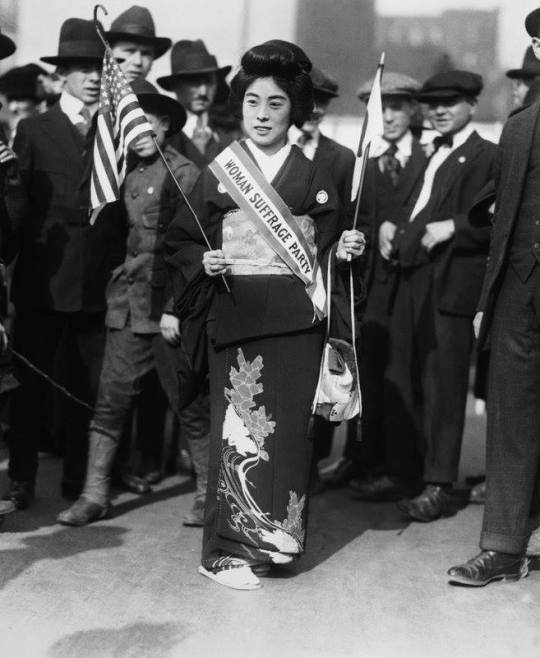
“Amidst men who harassed them and said that women belonged in the home to cook, clean, and make babies, she marched. Amidst other women asking for equality, rights, and the vote, she marched.Her name was Komako Kimura. She was one of at least 20,000 women who took to the streets of New York City, October 23, 1915, to march in the country’s largest women’s suffrage parade up to that time. In all, more than 50,000 people joined in the parade.This is a rare photograph of Kimura marching proudly. Kimura was a prominent Japanese suffragist who had arrived from Japan to help out her sisters in America.Kimura came from a traditional Japanese family, who had arranged a marriage for her when she was 14 years old to a man she had never seen. Like many women in Japan during that time, she was expected to obey the traditional customs. She was expected to be obedient, she was expected to follow the same traditions that generations of her forebears had followed before her.But, on the way to the marriage ceremony, Kimura, all 4 feet 8 inches of her, had other thoughts. She would slip out of the carriage and go into hiding. She sold her wedding finery and bought a ticket to another city. There, she would make a name for herself as a dancer.She then again defied Japanese convention by eloping with a young doctor. She would become a writer, publishing a novel, then edited a woman's magazine in Tokyo, the first publication in Japan of its kind asserting women's rights. It would be so controversial that the magazine would be suppressed. The conservative government of Japan then started watching her and would refuse her to hold suffrage meetings in the streets of Tokyo.She would also become a well-known actress in her country who would take on daring roles. Again, the government would step in, telling her that she needed to stick with nice and mild roles befitting of women at that time.She responded to that edict by opening her theater to the public without fee. She would be arrested and put on trial. The government, however, never knew what they were truly dealing with - Kimura would defend herself, providing arguments that were so well thought out that her trial would receive much publicity. Because of her, the word "suffrage", previously unspoken before in Japan, would be carried into the remotest districts of the empire.“
From The Jon S. Randal Peace Page on FB
0 notes
Text
A young black kid saw this comic in 1968 and burst into tears. The reason why is great.
Franklin was the first African-American character to appear in the iconic “Peanuts” strip. In 2018, the push for more equal representation in popular culture is still a struggle. But 50 years ago, legendary “Peanuts” creator Charles M. Schulz made history when he introduced “Franklin,” the first black character to appear in his Charlie Brown universe. He was an immediate hit and his influence is still resonating today. In a post on the Jon S. Randal Peace Page, laid out the significance clearly: “On July 31, 1968, a young, black man was reading the newspaper when he saw something that he had never seen before. With tears in his eyes, he started running and screaming throughout the house, calling for his mom. He would show his mom, and, she would gasp, seeing something she thought she would never see in her lifetime. Throughout the nation, there were similar reactions.” The opening strip showing Franklin’s arrival is simple but poignant. He is seen simply offering his hand to Linus and saying, “Hi … I’m Franklin,” to which Linus replies, “I’m very glad to know you.” Without saying much in the actual words, Schulz was saying everything in tone and intention: Kids often understand the world better than their adult counterparts and they get that race, gender and other forms of identity should not be barriers keeping us apart. In fact, in an interview years later, Schulz said he only received a few complaints about the character, including from a Southern newspaper editor who didn’t like that Franklin was sitting in the front of other white characters in a racially integrated school. “I didn’t even answer him” Schulz said. Schulz created Franklin at the urging of a teacher who wrote him letters. Los Angeles based high-school teacher Harriet Glickman wrote to Schulz asking him to introduce a black character into his strip. It was the same year that Martin Luther King Jr. had been assassinated and racial tensions in America were at their peak. While she didn’t think introducing a black character would change everything, she knew it would make a difference. What ensued was a series of back and forth letters between Schulz and Glickman, where she laid out the significance: “I’m sure one doesn’t make radical changes in so important an institution without a lot of shock waves from syndicates, clients, etc,” she wrote. “You have, however, a stature and reputation which can withstand a great deal.” Photo by Hannah Foslien/Getty Images). Half a century ago, we saw how much representation matters. It still matters today. It seems simple and obvious in hindsight but Glickman convinced Schulz to do something fairly revolutionary at the time: not only introducing a black character but one whom was just part of the Peanut gang. That sense of normalcy can make all the difference to marginalized groups. Of course, Franklin isn’t perfect. Chris Rock once famously joked on “Saturday Night Live” that the character hadn’t spoken a line of dialogue in 25 years. Still, there’s no denying the significance his introduction had and how it helped create a blueprint for greater inclusion across the board in years to come. Read more: upworthy.com
The post A young black kid saw this comic in 1968 and burst into tears. The reason why is great. appeared first on ViralFeedNova.
from WordPress https://ift.tt/eA8V8J https://ift.tt/2OV0ypE
via IFTTT
0 notes
Text
A Short, Important Story
I found this very short true story on the Jon S. Randal Peace Page. It is a story that is well worth the retelling, for it is a story of immense importance and wisdom, one that should be remembered for all time, for in many ways, no matter how the world changes, some things never change.
He just wanted to dance one last time, he was old, and he wanted to celebrate the heritage that was being…

View On WordPress
0 notes